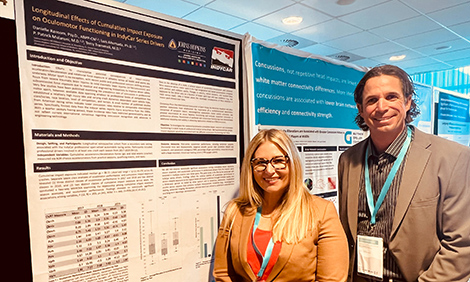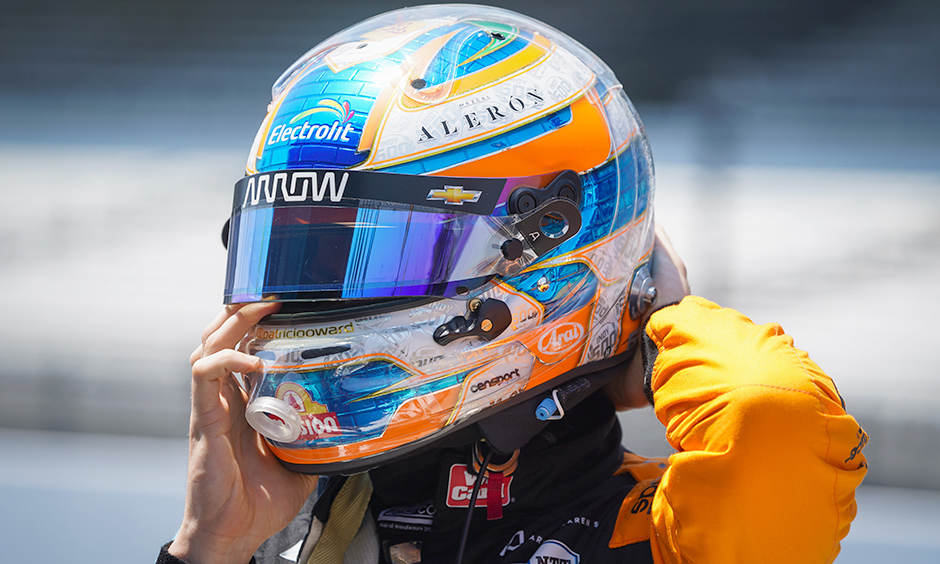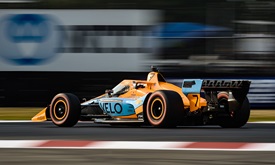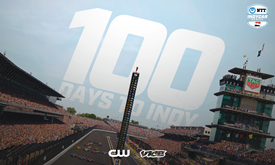INDYCAR Hailed for Trailblazing Work in Concussion Safety
DEC 12, 2022
INDYCAR has again been recognized as a leader in motorsports safety.
The latest example comes from the recent International Consensus Conference on Concussion in Sport, which was held in Amsterdam, where INDYCAR’s process of collecting and analyzing head trauma impacting its drivers was presented.
Since 2017, INDYCAR has tested drivers who have experienced a specified degree of impact in on-track incidents to look for possible head trauma. The thoughtful and organized method of assembling the information generated by the I-Portal Portable Assessment System developed by Pittsburgh-based Neurolign has led to what will soon be a six-year catalogue of driver data to scrutinize.
I-PAS tests not only are done following a driver’s accident, but they are also evaluated against data collected from previous tests executed in the offseason. For example, as part of the winter driver meetings, all active INDYCAR drivers – and those who hope to be – underwent what has become the standard testing that provides scientific, unbiased results.
 The information gathered by I-PAS is provided to doctors at the Johns Hopkins All Children’s Hospital in St. Petersburg, Florida, to be fed into an artificial intelligence program for correlation. The hospital’s sports medicine team, led by Drs. Patrick Mularoni and Danielle Ransom, got involved in this motorsports initiative through the locally based Kart 4 Kids program, which began in honor of Dan Wheldon, in which many NTT INDYCAR SERIES drivers, led by Sebastien Bourdais, participate.
The information gathered by I-PAS is provided to doctors at the Johns Hopkins All Children’s Hospital in St. Petersburg, Florida, to be fed into an artificial intelligence program for correlation. The hospital’s sports medicine team, led by Drs. Patrick Mularoni and Danielle Ransom, got involved in this motorsports initiative through the locally based Kart 4 Kids program, which began in honor of Dan Wheldon, in which many NTT INDYCAR SERIES drivers, led by Sebastien Bourdais, participate.
The combined effort has allowed INDYCAR to gain insight into the forces that are associated with concussion and the risk of head accelerations below the concussion threshold affecting the driver over time.
“It's a big deal because INDYCAR is the only sporting organization on Earth that has that data (on its athletes),” said Dr. Terry Trammell, the longtime safety consultant to INDYCAR and its medical team. “INDYCAR is the only (sanctioning body) that collects it and looks at it after every crash. All the data belongs to INDYCAR; it owns it. That makes it unique because its medical team can track (the findings).”
Trammell said much head trauma goes undetected because the individual does not show signs of a concussion, but that doesn’t mean he or she hasn’t had one. Hence the importance of testing.
“When I got tested (by I-PAS), they were scratching their heads asking how many concussions had I had? I said one when I was a kid,” Trammell said. “They said, ‘No, no, you’ve had more than that,’ so we sat down and started playing 20 questions, and I’d had (many). I was a reckless kid; I fell off dirt bikes, I fell from heights, I ran into a telephone pole that put me in the hospital, but I didn’t know any of those (were concussions) until I was an adult and we sat down and went through my history.
“It’s like, ‘Holy cow,’ and there are changes there that are measurable. That’s why we assume you’ve had a concussion, and that becomes your current status and allows us to see what’s changed and what you have to go back to before you can (compete) again.”
Trammell said INDYCAR’s medical team has seen patterns in recovery following a certain G-level impact to understand the timetable for a return to previous testing levels.
“The bottom line is and what’s significant is, there is no correlation between the accumulation of head G’s over the course of those seasons (2017-2021) with any change in the diagnostic testing,” Trammell said. “So, we’re pretty confident that at least in the short term, in those years we have not had drivers who have experienced change in their reaction times or their cognitive behavior as a result of head G exposure. That includes the ones who have had diagnosed concussions.”
Trammell said the information from INDYCAR’s initial three-year study has been submitted to the British Journal of Sports Medicine for publication. Long term, Trammell hopes INDYCAR has even more data to analyze in pursuit of more information related to head trauma.
“We think we have a unique viewpoint of where the threshold is for a concussion and what does it result in long term in terms of years,” he said. “Hopefully one day we’ll be out to decades because we’ll keep doing this.”



















